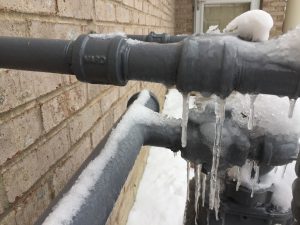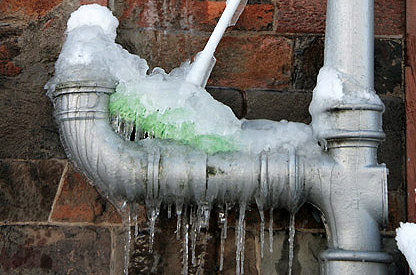Here on the next paragraphs you might get additional really good answers when it comes to Prevent Frozen Pipes .

Cold weather can damage your pipes, specifically by freezing pipes. Here's exactly how to prevent it from occurring and what to do if it does.
Intro
As temperatures decrease, the danger of frozen pipelines increases, potentially resulting in expensive repair services and water damages. Comprehending how to prevent icy pipelines is vital for house owners in cool climates.
Avoidance Tips
Shielding at risk pipelines
Cover pipes in insulation sleeves or use warmth tape to protect them from freezing temperature levels. Focus on pipelines in unheated or exterior locations of the home.
Heating strategies
Maintain indoor areas properly heated up, specifically locations with plumbing. Open up closet doors to enable cozy air to flow around pipes under sinks.
Exactly how to determine icy pipes
Look for reduced water circulation from taps, unusual odors or sounds from pipes, and noticeable frost on exposed pipelines.
Long-Term Solutions
Structural adjustments
Consider rerouting pipelines away from outside wall surfaces or unheated areas. Add extra insulation to attic rooms, cellars, and crawl spaces.
Upgrading insulation
Purchase premium insulation for pipelines, attics, and walls. Correct insulation helps keep constant temperatures and lowers the risk of frozen pipes.
Securing Exterior Pipes
Yard tubes and exterior faucets
Detach and drain garden hose pipes before winter season. Set up frost-proof spigots or cover outdoor taps with shielded caps.
Recognizing Icy Pipes
What creates pipelines to freeze?
Pipelines freeze when exposed to temperature levels listed below 32 ° F (0 ° C) for expanded durations. As water inside the pipes freezes, it increases, putting pressure on the pipeline walls and possibly creating them to burst.
Threats and problems
Frozen pipelines can cause water interruptions, home damage, and pricey repair services. Burst pipes can flood homes and create substantial architectural damages.
Signs of Frozen Pipeline
Determining icy pipelines early can stop them from breaking.
What to Do If Your Pipelines Freeze
Immediate actions to take
If you think icy pipelines, keep faucets available to soothe pressure as the ice melts. Utilize a hairdryer or towels soaked in hot water to thaw pipes slowly.
Conclusion
Preventing icy pipes needs proactive steps and quick responses. By understanding the causes, signs, and preventive measures, house owners can secure their plumbing throughout cold weather.
5 Ways to Prevent Frozen Pipes
Drain Outdoor Faucets and Disconnect Hoses
First, close the shut-off valve that controls the flow of water in the pipe to your outdoor faucet. Then, head outside to disconnect and drain your hose and open the outdoor faucet to allow the water to completely drain out of the line. Turn off the faucet when done. Finally, head back to the shut-off valve and drain the remaining water inside the pipe into a bucket or container. Additionally, if you have a home irrigation system, you should consider hiring an expert to clear the system of water each year.
Insulate Pipes
One of the best and most cost-effective methods for preventing frozen water pipes is to wrap your pipes with insulation. This is especially important for areas in your home that aren’t exposed to heat, such as an attic. We suggest using foam sleeves, which can typically be found at your local hardware store.
Keep Heat Running at 65
Your pipes are located inside your walls, and the temperature there is much colder than the rest of the house. To prevent your pipes from freezing, The Insurance Information Institute suggests that you keep your home heated to at least 65 degrees, even when traveling. You may want to invest in smart devices that can keep an eye on the temperature in your home while you’re away.
Leave Water Dripping
Moving water — even a small trickle — can prevent ice from forming inside your pipes. When freezing temps are imminent, start a drip of water from all faucets that serve exposed pipes. Leaving a few faucets running will also help relieve pressure inside the pipes and help prevent a rupture if the water inside freezes.
Open Cupboard Doors
Warm your kitchen and bathroom pipes by opening cupboards and vanities. You should also leave your interior doors ajar to help warm air circulate evenly throughout your home.

I'm certainly very interested in Prevent Frozen Pipes and I'm hoping you appreciated our blog post. Sharing is good. Helping people is fun. Bless you for being here. Don't hesitate to pay a visit to our blog back soon.
Maintenance Sign-Up